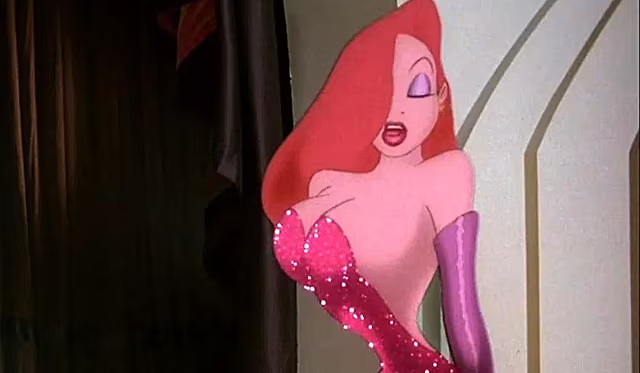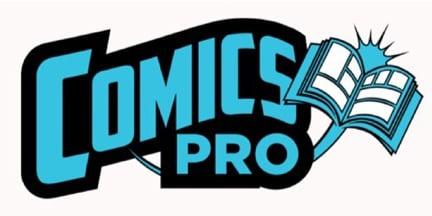If you click on a link and make a purchase we may receive a small commission. Read our editorial policy.
Ramona Fradon was a quiet trailblazer in comics for her entire career
The late artist broke new ground without fanfare throughout her lengthy time in the industry

Popverse's top stories
- For Popverse members only: Between the end of My Hero Academia, the return of Spy x Family, Gnosia as an anime, and a woman slapping her haters, this anime season has the perfect mix of old and new shows
- Watch now: Before Game of Thrones, George R. R. Martin remembers being fan number one at the very first New York comic con
- For Popverse members only: The full, official The Walking Dead: Daryl Dixon panel from NYCC 2025
Since her death was announced February 24, praise has been flowing in from all corners for the late comic artist Ramona Fradon, and deservedly so; her career — which started all the way back in 1949, when she was just 23 years old — has been a long and distinguished one, including work for a number of publishers including DC, Marvel, Archie Comics, and Nickelodeon, as well as a 15-year stint as the primary artist on newspaper strip Brenda Starr, Reporter.
Fradon's open, inviting cartooning style was a mainstay in comics for decades, and she remained a presence at comic conventions all the way up to last year. Fradon was, doubtlessly, a unique talent that will be much missed — but, even in the wake of her death, it feels as if she remains an underrated force inside the comics industry.

Born in 1926 in Chicago, Fradon came from a family of calligraphers — both her father and older brother were in the commercial lettering business — and she herself went to art school to study design. It was only after graduating that she got into comics, via a friend of her husband who shared her cartooning samples with DC Comics, beginning a relationship that would continue for the rest of her life. Across the next 16 years, Fradon enjoyed lengthy runs on Aquaman and Metamorpho, a character she co-created with writer Bob Haney, before leaving the business to concentrate on her family.
She’d return in 1972, in a move that would in its own way be trailblazing. Comics was a primarily a male-dominated profession in those days, with the exception of a few — far too few — women making their living in the field. While newspapers employed female cartoonists like Martha Orr, Dale Messick, and Tarpé Mills decades earlier, there was only a handful of women creators in the comic book industry, and few (if any) managed to have the success that Fradon did. Fradon not only returned to the business eight years after “retiring,” but did so in dramatic fashion, soon earning the regular slot pencilling the Super Friends series that ran from 1976 through 1981… in the process, becoming the first woman to regularly illustrate Batman, Superman, Wonder Woman, and the Justice League, albeit in a series not named for any of the above. She’d already become the first woman to regularly illustrate a superhero, decades earlier, thanks to her Aquaman work; no-one had noticed at the time.
In a strange way this feels like a summation of Fradon’s time in comics. She repeatedly, quietly, broke barriers without fanfare, and demonstrated an eagerness to change and grow that so many of her contemporaries lacked. (Primarily moving genres, with work on House of Mystery and House of Secrets in the ‘70s, as well as comedy work in Plop! and Crazy magazine, and her Brenda Starr run in the 1980s, but she also wrote and illustrated her own kids book, and also worked on Simpsons and SpongeBob Squarepants comics later in her career; she also went back to school in the ‘80s to study psychology.)
She kept working all the way up until her death, both on commissions — I proudly own a Metamorpho sketch by her — and published work, with colorist Trish Mulvihill sharing what is likely her final professional work on social media this weekend, and her work really didn’t miss a step despite her advanced years. It’s a cliche to say about the deceased that the business needs more people to follow their example, but it’s very true in this case: Fradon barely slowed down, remained curious and passionate, and all of that showed in her art all the way up until the end. She was part of comics history — in her own way, she shaped comics history — and comics is lesser with her death.
Fradon died aged 97 on February 24, just a month after announcing her retirement.
Get ready for what's next with our guide to upcoming comics, how to buy comics at a comic shop, and our guide to Free Comic Book Day 2025.
Follow Popverse for upcoming event coverage and news
Find out how we conduct our review by reading our review policy
Let Popverse be your tour guide through the wilderness of pop culture
Sign in and let us help you find your new favorite thing.
















Comments
Want to join the discussion? Please activate your account first.
Visit Reedpop ID if you need to resend the confirmation email.